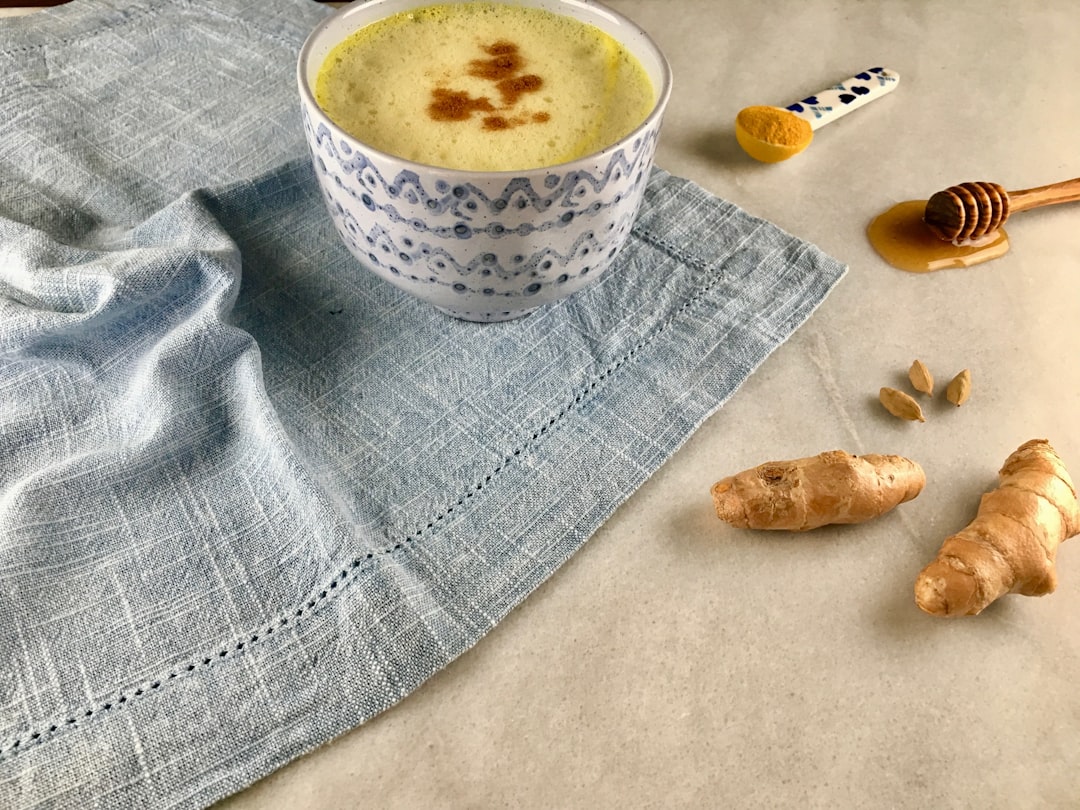Yellow foods have unique health properties that ward off oxidative stress, promote gut health, and support a balanced microbiome.
The food rainbow is a five-colour spectrum of edible plants that can help guide your food choices, strengthen your body’s natural protections, and enhance specific bodily functions using an array of phytochemicals.
Table of contents
- 1. What is "Eat the Rainbow"?
- 2. Yellow is for the gut, microbiome, and digestion
- 3. Phytochemicals in yellow foods
- 4. Yellow vegetables and recipe ideas
- 5. Yellow fruit and recipe ideas
Contrary to many online food regimens that focus on deprivation, this eating philosophy is about incorporating diversity to your daily meals, not cutting stuff out. It’s also about pleasure, not just kale smoothies and raw carrot sticks.
That’s why we’ve combined the hard facts behind eating the rainbow, and recipe recommendations to inspire you in the kitchen – because health isn’t some sterile, clinical aspiration, it’s about reconquering the kitchen and eating delicious, balanced meals.
☝️There is no affiliation between Atlas and the recipes featured in this article. They have been selected according to the quality of the ingredient selection, instructions, and creativity.☝️
What is “Eat the rainbow”?
Vivid fresh produce is secretly telling you that it contains beneficial plant nutrients for your health and a palate of flavours for your taste buds.
Rainbow foods don’t come in packages, they come as nature intended - prepacked in their own flesh which evolved to protect them from the dangers of the outside world. Yes reader, rainbow foods are edible plants, and they’re a source of fiber that’s good for your gut.

There are five colours: red, orange, yellow, green, and blue/purple (depending on the nature and intensity of the pigment). Each colour is associated with 3–5 proven health attributes, although there could be more, because science still only has limited understanding of phytochemicals and their functions.
Plants developed these colourful substances for a few reasons. Some of these pigments are chemicals that help defend against threats, like insects and ruminants, by imparting bitter flavours, antibacterial mechanisms, and more.
Colour also enhances the propagation to their species by making them attractive to other species. After all, colourful flowers attract bees that spread their pollen and, when bears eat berries, they transport the seeds to other locations in their belly where eventually their stool can fertilise this new plant.
You have probably heard of polyphenols - good, because they are important members of these health-giving plant chemicals. Most of their benefits are indirect and achieved by the action of the gut microbiome, where they influence the composition of our gut bacteria and encourage microbes to produce beneficial substances for the gut, brain, and other organs.
Why is oxidative stress bad?
There’s a biological cost to being alive because basic activities like eating, breathing, and the environment expose us to free radicals.
Free radicals are a byproduct of our metabolism – a term that describes all the essential life-giving processes of the body – and the environment. Here are some common internal and external sources of free radicals in everyday life:
- Mitochondria: the part of cells that produces energy
- Inflammation: the body’s response to damage and threats
- Exercise: a result of accelerated metabolic processes
- Cigarette smoke and air pollutants: contain toxic gases and particles
- Pesticides, radiation, industrial solvents: exposure leads to cellular damage
Oxidative stress occurs when free radicals outnumber antioxidants in the body because there are no electrons left to pair with. Seeing as the human body has over tens of billion cells that make up your organs, bones, skin, and other tissues, you can probably see why oxidative stress is a hot topic for researchers.
Researchers have found that oxidative stress plays a role in many common diseases, including heart disease, inflammatory diseases, and cancer. It’s also involved in ageing. Fortunately, edible plants contain antioxidants that act mostly indirectly on the body.

Indeed, it’s not as cut and dry as you eat them and they work. Many antioxidant phytonutrients are metabolised by the bacteria in the gut microbiota, who make them available for the body. Even then, they aren’t necessarily used directly. Rather, these chemicals stimulate antioxidant processes in the body itself, which then takes care of the free radicals.
And now that we’ve covered oxidative stress, free radicals, and antioxidants, let’s explore the specific and evidence-based facts on yellow foods for health, the gut, and the gut bacteria that call your large intestine home.
The health properties of yellow foods
Yellow foods are particularly beneficial for your gastrointestinal tract, digestion, and the gut microbiome.
Like red and orange foods, yellow edible plants contain antioxidants, but that’s not all. They actually contain specific substances that act on your digestive tract that processes all your food and beverages.
This long tube that runs from your mouth to your anus doesn’t just excrete foul-smelling brown dumplings of water and minced food. These dumplings actually contain a bunch of other stuff that your body needs to rid itself of too: fats, cholesterol, minerals, sex hormones, bile, and cell debris, including the remains of red and white blood cells.
- Antioxidant
- Enzymatic activity
- Gastric motility and regulation
- Modulate the glycaemic impact of food
- Support a healthy gut microbiome
When your gut isn’t working optimally, it can take a toll on the whole body, and the bacteria inside it - that’s where yellow foods come in. They modulate the secretion and activity of enzymes that help break down your food and participate in the natural detoxification processes of the body.
They can also help metabolise food and move it out of the stomach (gastric motility) towards the small intestine where nutrients are absorbed before reaching the colon where gut bacteria take care of the leftovers.
Yellow foods can even act on the activities of stomach bacteria, like H. pylori, a common cause of peptic ulcers.
Phytonutrients in yellow foods
There are many plant chemicals, and the scientific community still has a lot left to study. However, there are already some reliable findings on specific phytonutrients in yellow foods and their functions in humans. Many of these plants contain bioflavonoids that support gut health and digestion while preventing oxidative stress to cells.
| Phytonutrients in yellow foods | |
|---|---|
| Bioflavonoids | Bromelain |
| Gingerol | Lutein |
| Nobelitin | Prebiotic fibers |
| Rutin | Zeaxanthin |
Pineapple is a source of bromelain that appears to play a role in breaking down undigested food in the stomach, enhancing overall removal of food remnants from the digestive tract (both stomach and gut).
Citrus fruit are also well-researched. The acidity of these fruit is considered to act beneficially on the digestive tract by lowering the pH and making it more acidic. It’s worth mentioning that, contrary to rumours, acidity is not a bad thing. It supports a balanced gut environment for beneficial bacteria in the gut.
Yellow citrus may also help reduce the glycaemic load of starchy foods, which lowers the impact of carbohydrates on blood sugar levels. In particular, a flavonoid in citrus, called naringenin, also seems to have antidiabetic activities. Other phytonutrients in citrus, like rutin, hesperidin, and nobiletin, help protect the stomach from gastric ulcers.
Yellow vegetables and recipe ideas
Healthy food isn’t just green shots and raw food. Check out these creative recipe recommendations to boost your health with plant foods.
| Corn | Ginger |
| Potatoes (Yukon) | Bell pepper (yellow) |
| Onions (yellow) | Squash (acorn, butternut, summer, winter) |
You’ll be glad to know that popcorn can contain higher levels of polyphenols than sweetcorn. Perfect for snacking when you make it at home. It’s so easy that you’ll be ashamed you never did it before with this recipe for stove-top popcorn with healthy fats like olive oil or coconut oil.
If you want to add more ginger to your life, warm up your days with traditional Tamil ginger tea, with black tea leaves (a source of polyphenols) and cardamom, a potent spice with wonderful aromatic properties. You can even serve it with milk!

When it comes to potatoes, you’ll struggle to find Yukon Gold spuds in the UK and Europe. But don’t let that stop you, you can use these local potato varieties with yellow flesh instead: Elfe, Desiree, and Russet. To enjoy the prebiotic benefits of their resistant starches for your gut microbes, don’t forget to cool your potatoes after cooking them.
Get the benefits of red, yellow, and orange bell peppers with this traditional Italian recipe for peperonata. It’s a refreshing summer dish that also contains red tomatoes, yellow onions, and garlic. Wait for a sunny day and serve cool as a side dish or with crusty sourdough bread.
If you’re bored of butternut squash (or any other squash/pumpkin), impress the table with this stuffed butternut squash recipe with quinoa, mushrooms, kale, and walnuts to satisfy your mouth and your gut microbes.
Yellow fruit and recipe ideas
Make yellow fruit exciting with these creative and healthy recipes for extra fiber, phytonutrients, and flavour every day.
| Apples (Golden Delicious) | Asian Pears | Bananas |
| Lemons | Pineapple | Starfruit |
Reminisce with your palate and apples this season. Try making some classic baked apples (no added sugar) with soaked raisins and walnuts based on this simple Eastern European recipe.
Many of you have probably never tasted an Asian pear, don’t worry - they’re just like apples. Try them raw - you’ll be amazed by the refreshing crunch and mild sweet flavour. You could also make them into a Korean BBQ ribs marinade for something more exotic.
If you’re bored of bananas, turn them into bite-size morsels and take them to work for your tea break. They contain coconut flour, dates, and dark chocolate. Just remember to choose high-quality dark chocolate chips for even more polyphenol goodness.
Lemons add great tang to savoury dishes and salads. So rather than buying store-bought salad dressing, try this really simple homemade lemon vinaigrette made from ingredients you definitely have in your kitchen.
When it comes to pineapple, try this frozen pineapple sorbet with a high power blender. It’s a perfect dessert or snack, and it’s made from frozen pineapples to save you the work of preparing this fruit yourself.
Starfruit are star-shaped fruit that are entirely edible (good thing too, they’d be a nightmare to peel). Try this refreshing pineapple and starfruit beverage with pineapple, lemon juice, and sparkling water to quench your thirst and get a hit of bubbles without the added sugar.
☝️TIP☝️Combine your eat the rainbow goals and personalised food recommendations for your gut bacteria with the Atlas Microbiome Test.
- DM Minich, 2019. A Review of the Science of Colorful, Plant-Based Food and Practical Strategies for “Eating the Rainbow”
- V Lobo et al., Free radicals, antioxidants and functional foods: Impact on human health, 2010
- AN Panche et al., Flavonoids: an overview, 2017
- G Williamson, The role of polyphenols in modern nutrition, 2017
- MG Coco JR & JA Vincent, Analysis of Popcorn (Zea Mays L. var. Everta) for Antioxidant Capacity and Total Phenolic Content




















